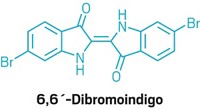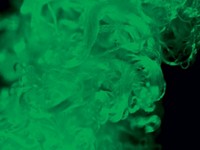Advertisement
Grab your lab coat. Let's get started
Welcome!
Welcome!
Create an account below to get 6 C&EN articles per month, receive newsletters and more - all free.
It seems this is your first time logging in online. Please enter the following information to continue.
As an ACS member you automatically get access to this site. All we need is few more details to create your reading experience.
Not you? Sign in with a different account.
Not you? Sign in with a different account.
ERROR 1
ERROR 1
ERROR 2
ERROR 2
ERROR 2
ERROR 2
ERROR 2
Password and Confirm password must match.
If you have an ACS member number, please enter it here so we can link this account to your membership. (optional)
ERROR 2
ACS values your privacy. By submitting your information, you are gaining access to C&EN and subscribing to our weekly newsletter. We use the information you provide to make your reading experience better, and we will never sell your data to third party members.
Synthesis
Green route to a blue dye
Bioengineered process for making indigo removes need for reducing agents
by Celia Henry Arnaud
January 15, 2018
| A version of this story appeared in
Volume 96, Issue 3
The industrial process for making and using indigo—the dye that gives blue denim its distinctive color—has two strikes against it in terms of environmental friendliness. First, the synthesis involves hazardous chemicals, including aniline, formaldehyde, and strong bases. Second, because indigo isn’t water soluble, the synthesized compound must be treated with reducing agents before it can be used as a dye. A team led by John E. Dueber of the University of California, Berkeley, has devised a microbial fermentation that results in a more sustainable process for using indigo (Nat. Chem. Biol. 2018, DOI: 10.1038/nchembio.2552). They engineered Escherichia coli bacteria to produce indoxyl—a precursor to indigo—from tryptophan. They also engineered the bacteria to produce a glycosyltransferase, an enzyme that adds glucose to indoxyl as a protecting group to stabilize it. The glycosylated compound, indican, is sufficiently stable for long-term storage. When the dye is needed, the glucose can be enzymatically removed with a β-glucosidase to regenerate indoxyl, which spontaneously dimerizes, yielding the reduced form of indigo, the form that crystallizes directly onto cotton fibers. The researchers dyed cotton fabric by spraying it with an indican solution, dipping it in a β-glucosidase solution, and oxidizing the dye compound in air.





Join the conversation
Contact the reporter
Submit a Letter to the Editor for publication
Engage with us on Twitter